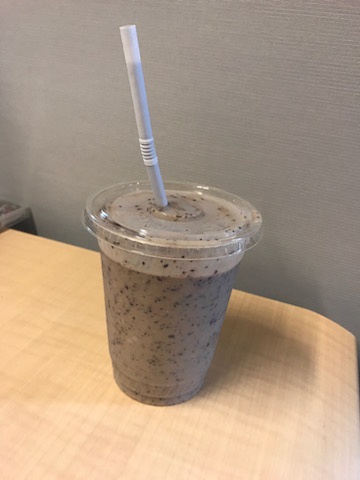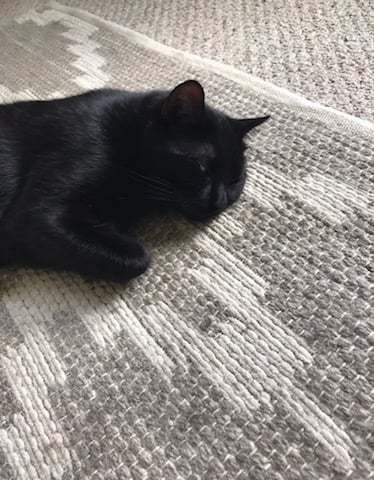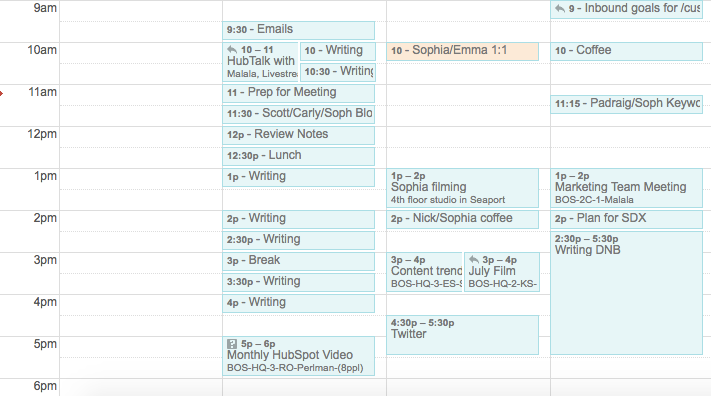I’m not ashamed to admit that I’m not the most together person in the world.
I eat three meals a day, but one of them is usually takeout. I hit snooze so often it should be considered a nap. And I definitely don’t drink enough water. But I imagine I’m not alone.
There are plenty of productive members of society like myself who work and go to school and have fulfilling lives — those lives just don’t always involve waking up at 5 a.m. for morning meditation or listening to stimulating podcasts on their commutes the way so many famed morning routines do.
So here’s to the snoozers, the night owls, and the TV binge-watchers. I celebrate you, and I want to help you figure out if any of the most dreadful-sounding productivity hacks will actually work for you.
Over the course of a month, I spent each week trying out a different productivity hack to see if it made me more productive — in the morning, and throughout the day. Some of these techniques were brand new to me, while others had been feebly attempted (and abandoned) before.
Keep reading for a detailed explanation of why I went on this productivity journey, or skip ahead to the hacks you want to read more about:
- Week One: Eating Breakfast Every Day
- Week Two: Exercising Every Morning
- Week Three: Using the Pomodoro Technique
- Week Four: Freewriting Every Morning
Why I Tried Out Productivity Hacks
I spent a month this summer testing out different productivity hacks as part of a larger initiative my fellow HubSpot Blog team members participated in. Traditionally, during the summer months, we experience a slight dip in traffic due to seasonality — after all, we want you to enjoy summer vacations away from your email inbox, even if it means missing some of our blog posts.
With that in mind, we decided to take a month to run different experiments and report on the results — and I decided to devote time to testing out different productivity hacks so I could report on the results to you fine people, our readers.
I spent each week trying out a new hack — with varied results. Read on to learn more about how I became the most productive woman in the world in just 30 days (just kidding).
4 Productivity Hacks (& Results)
1) Eating Breakfast Every Day
Before the Experiment
Don’t get me wrong, I love food. But between the aforementioned snoozing and my lengthy commute time to work, eating breakfast before work was darn near impossible for me.
And by the time I got to work, which was usually slightly later than I wanted for the previously mentioned reasons, I would dive right into my to-do list — only to find myself ravenous and ready for lunch by 10:30 a.m. Or worse, scarfing down a Pop-Tart to tide myself over until my immediate sugar crash as a direct result of eating said Pop-Tart.
But starting your day with a healthy breakfast can have a huge impact on your productivity. The food we choose throughout the day impacts not only our productivity, but also our moods, focus, and energy. In fact, a study found that the more servings of fruits and vegetables people ate throughout the day, the more engaged, happy, and creative they were.
As it turns out, 31 million Americans (roughly 10% of the population) end up skipping breakfast every day — probably for reasons like mine. So I committed to a full week of making — and eating — a healthy breakfast.
During the Experiment
I quickly realized that changing the way I sleep and get up in the morning would require a lot longer than a month to complete, and I needed a healthy breakfast solution that also didn’t take too long once I finally made it into the office.
The solution? Smoothies.
Luckily, HubSpot’s Cambridge office has a fully-stocked kitchen with a lot of the materials and equipment needed to make a healthy breakfast. With the help of plant-based protein powder and spinach I brought from home, I was able to quickly make healthy smoothies that were easy to consume and fairly tasty. I can’t, however, speak for their appearance:

Look, my smoothie matches my gray desk divider!
Gray smoothies notwithstanding, this was far and away my favorite productivity hack of the experiment.
Results of the Experiment
Ironically, my interest in smoothies was to save time so I could dive right into work, but dedicating time to making and consuming breakfast before I got started with every work day helped me be more productive. I ended up taking a few minutes before getting started to a) enjoy my breakfast, b) surf Twitter without feeling guilty for procrastinating and c) prioritize my day.
Besides the health benefits of eating healthful foods first thing in the morning, I think there’s also something to be said for forcing yourself not to dive into work right away and reflect on your priorities. It’s easy when you’re swamped in to-dos to feel so stressed and overwhelmed that you start working the second your eyes open. But by making breakfast or spending your morning doing something not directly work-related, you can organize your thoughts, prioritize the mounting list of tasks we all have, and enjoy a little “me time” — and debriefing on which projects and tasks to tackle to make your day as efficient as possible.
There were definitely days when I wanted a Pop-Tart (but I promise, I didn’t have one). Also, one day that week, I decided to treat myself to a technically healthy but fairly enormous breakfast at a vegan diner. Delicious? Absolutely. But I also fell into a food coma shortly after and had a less productive day than my smoothie days.
2) Exercising Every Morning
Before the Experiment
For those of you already rolling your eyes, trust me — I know how you feel. Working out is the worst.
But actually, it’s not. Apart from the health benefits we all know and forget as our sneakers collect dust from the corners of our closets — like decreased risk of chronic disease, weight control, better sleep, and stronger muscles and bones — it can have a positive impact on your productivity all day.
Regular exercise can improve your memory retention, sharpen your concentration, help you learn faster, make you more creative, and lower stress. I don’t know about you, but I wouldn’t say no to literally any of those things.
I’m still in the process of recovering from an ankle injury, so I wasn’t exercising at all before starting the experiment for a week — let alone exercising in the morning. Saying I was not excited about trying out this productivity hack was an understatement, but I wanted to do it in the morning to get it out of the way — and to achieve those promised benefits even sooner.
During the Experiment
I decided to work out using 30-45 minutes Pilates videos every morning — mostly because I wanted to do something that would be low-impact on my ankle, but partly because I didn’t want to actually have to leave my house to get a workout in.
On the first day of testing out this hack, as my alarm went off 45 minutes earlier than normal and I stared at my yoga mat, I said out loud to no one in particular, “I already hate this.”
Luckily, I had a supportive family member who got up when I did and motivated me to keep going:

We’ll call our workout routine “Pilates with Phil”
Unfortunately, his support waned the longer the workout went on every morning.

Results of the Experiment
As a side effect of exercising and waking up early, I started getting tired and falling asleep much earlier, which definitely made me feel more productive at work. I felt more alert and focused at the start of my day — having already been awake for a couple of hours — and I found myself making healthier eating choices (see above) after starting my day off on the right foot. On a few of these days, I didn’t even feel the need to drink coffee once I got to my desk!
I’ll confess that, halfway through the week, I snoozed through my alarm and worked out in the evening instead — but it definitely weighed on me as one more item on my to-do list, and getting it done early in the day was far superior.
So, while I don’t think I can commit to daily morning exercise, I can confirm that getting up and moving once a day definitely made me feel more alert and relaxed, which lasted for the entire rest of the day.
3) Using the Pomodoro Technique
Before the Experiment
Before I tested out this productivity hack, I was familiar with the concept of blocking off time for specific tasks, as well as blocking off time for breaks, but I wasn’t doing it with any particular rhyme or reason.
Simply put, I would totally disregard calendar appointments I’d set for myself and would stay in a groove if I hit one — until I looked up from my computer, hours later, with bloodshot eyes, wondering what had happened to the rest of my to-do list.

Not exactly easy to follow.
So for the next week of my experiment, I decided to test out the Pomodoro Technique — and no, it isn’t a delicious cooking method as I previously thought. It calls for working in 25-minute bursts with short breaks in between. Once you’ve completed four Pomodoros (25-minute increments), you could take a longer break before starting work again.
It sounded like a great way to balance the demands of my writing workload writing several blog posts per week in addition to various other meetings and projects.
During the Experiment
I cannot overstate the degree to which this time management method did not work for me.
I downloaded the Pomodoro Technique Chrome extension to remind me of when to start working and to take a break, and I grew to hate that little tomato — a real shame, since it’s one of my favorite fruits/vegetables.

Tomatoes will never be the same.
I really missed being able to get into the groove working on a project — particularly when it came to writing blog posts, which typically takes more than 25 minutes.
I even tried hacking together my own Pomodoro Technique calendar when I couldn’t handle the tomato reminders, but the pop-up calendar reminders irked me even more.

I was in notification hell.
By the Wednesday of the week I started testing out this productivity hack, I was back to my old ways — and loving it.

Writing blocks, how I missed thee.
Results of the Experiment
The Pomodoro Technique definitely didn’t work for me, but I don’t think it’s the fault of the technique itself — I think it doesn’t work for my particular job requirements, which involve multiple daily deadlines.
When I write blog posts, I don’t necessarily need (or want) my time split into 25-minute bursts — I want to get blog posts out the door so I can get started on the next one.
My very unscientific assumption is that the Pomodoro Technique works better for people working on longer-term projects and daily tasks, rather than deadline-driven bloggers and creators turning things in every day.
4) Freewriting Every Morning
Before the Experiment
When I come home from writing blog posts all day, the last thing I want to do is sit down and write more — even if it’s creative writing on my own.
So when I read that morning freewriting can increase productivity, I was skeptical about whether or not it would work for me — wouldn’t it just be adding more work to my plate?
Before I tested this productivity hack, the closest thing I did that could be called morning freewriting was my morning tweeting. So I decided to try it out for a week.
During the Experiment
I blocked off 30 minutes each morning for freewriting when I got into the office each day and went to work. And let me tell you, it was hard.
It wasn’t that I didn’t have anything else to write about besides marketing topics for the blog — it’s that I didn’t want to write paragraphs. I wanted to write lists.
I’m in the process of moving, and I’m a bridesmaid in two upcoming weddings, and during these 30-minute blocks, I honestly couldn’t stop myself from creating list after list of things I needed to do — like this one:

A Maine wedding without bug spray is a non-starter.

I learned from this experiment that a comfy rug is essential to at-home workouts.
Over the course of the week, I eventually started writing longer pieces with more sentences and fewer bullet points — and freewriting shifted into journaling.
Results of the Experiment
I don’t know that I did freewriting exactly correctly — technically, it was freelisting. But going through the motion every morning got me in the right mindset to braindump — which any blogger will tell you is a critical part of the writing process, when you write down any and everything you know about a topic before filling in gaps in knowledge with more research.
As a side-effect of the list-writing, I believe I was a more productive worker by handling and organizing my personal to-dos before getting started on work tasks. It was a lot less stressful knowing I had an organized game plan for calls to make and research to do on my lunch break and during personal time after work too.
There’s No Such Thing as “Hacking” Productivity
Like many other things in life, there isn’t an easy way out when it comes to working efficiently and successfully at your job every single day. There will be days when you crush your to-do list, and there will be days when you eat Pop-Tarts and get hit with a wicked case of writer’s block.
My biggest lesson from this experience was that all hacks aren’t created equal — it’s about figuring out how and when you work most productively, and optimizing your strategies from there.
My strategies could still use a little tweaking, and my next big experiment will be trying to change my disastrous sleep habits to kick the snooze button to the curb. But until then, I’ll be drinking smoothies, attempting to work out, and avoiding every tomato I come across.
![]()






